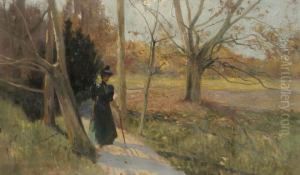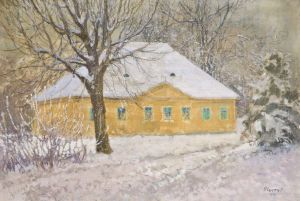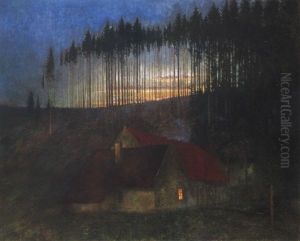Victor Olgyai Paintings
Victor Olgyai was a Hungarian-Slovak painter and graphic artist known for his contributions to art during the early to mid-20th century. Born on February 2, 1882, in Zólyom (today Zvolen, Slovakia), which was part of the Austro-Hungarian Empire at the time, Olgyai was exposed to the rich cultural milieu of Central Europe that influenced his artistic development.
Olgyai's education in art began at the Royal Drawing School in Budapest, and he continued his studies at the Munich Academy, where he was influenced by the prevailing trends in German art, particularly Art Nouveau and Symbolism. His style was also shaped by the Hungarian National style known as the 'Gödöllő School,' which emphasized national characteristics in art.
Throughout his career, Olgyai was involved in various artistic circles and movements. He spent time in Paris, which was a hub for avant-garde art, and this experience further broadened his artistic outlook. Olgyai's work often depicted landscapes, cityscapes, and genre scenes, characterized by a poetic and sometimes romantic atmosphere. His graphic works, including illustrations and etchings, demonstrate a high level of craftsmanship and attention to detail.
During his lifetime, Olgyai was involved in art education, teaching at the School of Applied Arts in Budapest. His influence on younger generations of artists was significant, as he imparted both technical skills and an appreciation for the aesthetic movements of the time.
Victor Olgyai passed away on October 10, 1952, in Budapest, Hungary. His legacy is preserved in the works he left behind, which continue to be appreciated by art historians and collectors. Olgyai's contribution to Hungarian and Slovak art is recognized for its synthesis of local traditions with broader European artistic movements, making him an important figure in Central European art history.

























